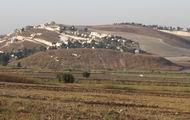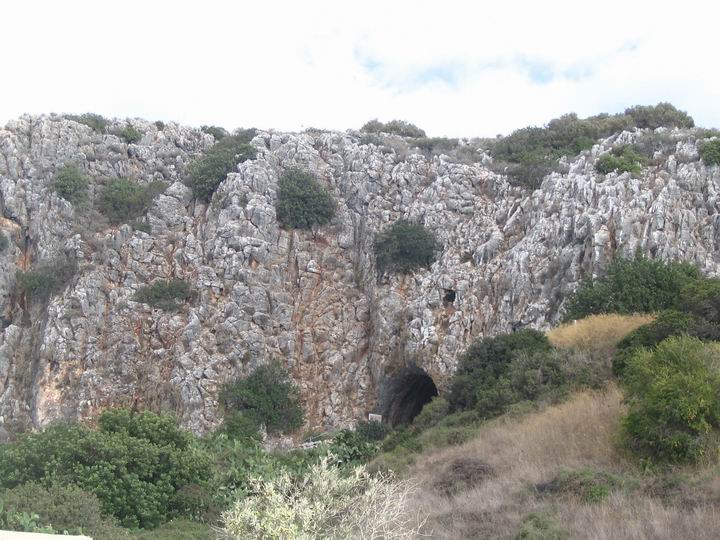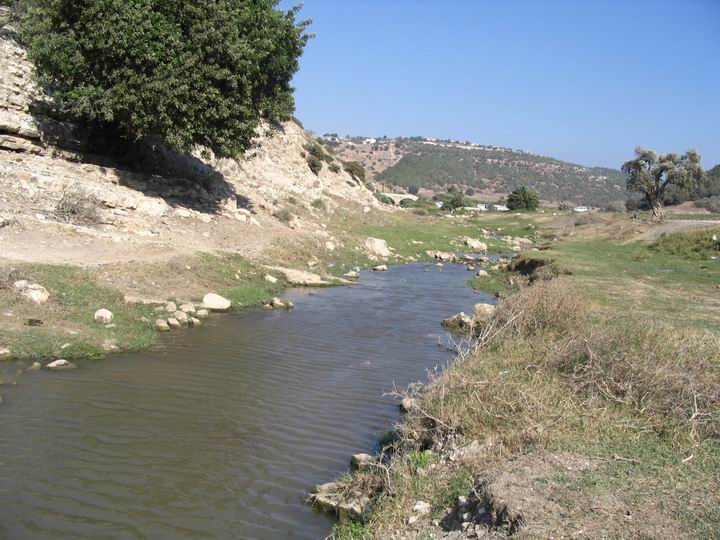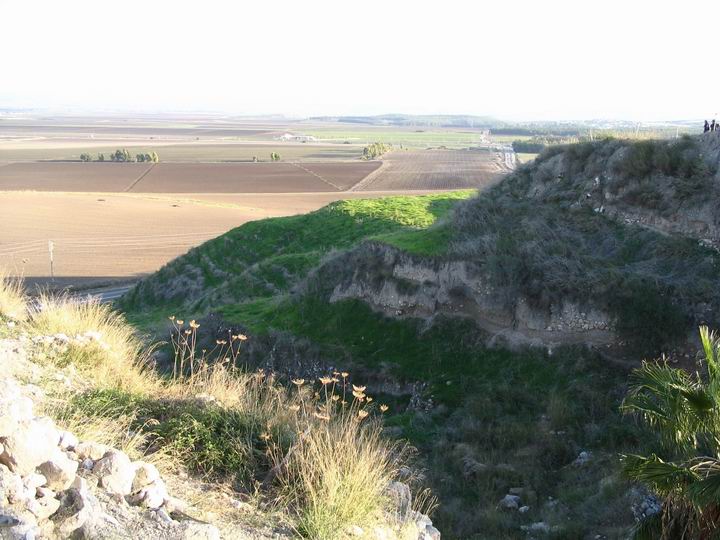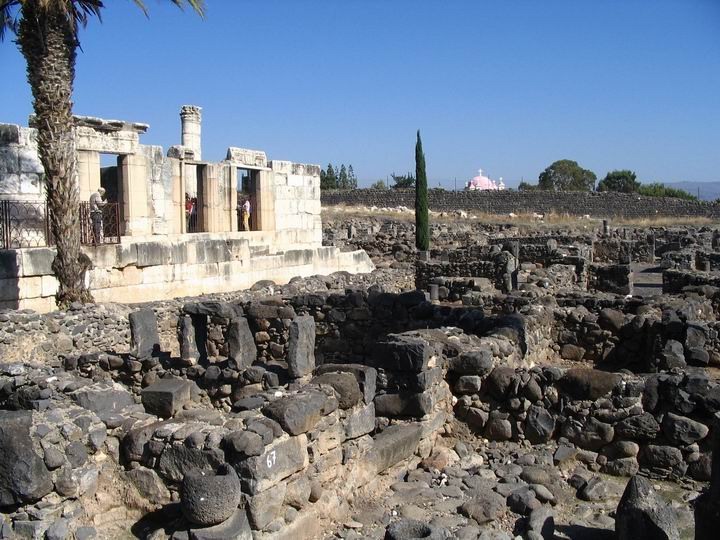This page describes the history of the urbanization in Israel. Examples are given, and mapped to the sites that are featured in BibleWalks.com.
Home > Info > Urbanization history
Contents:
Overview
History
Stages
Examples
Overview:
This page describes the history of the urbanization in Israel, starting from the caves, up to the modern cities.
Examples are given for each of the stages, and are mapped to sites that are featured in BibleWalks.com. At the last section an example is given of a typical Israeli scene, where all the stages are combined together in a small area.
History:
Ancient Israel had a rich history of urbanization. Here are some of the stages of urbanization in ancient Israel:
Prehistoric era: The earliest evidence of human settlement in Israel dates back to the prehistoric era, with evidence of human habitation in caves such as the Nahal Me’arot caves in the Carmel Mountains. Early man then emerged from the natural caves and established seasonal sites, farms and villages starting from the Neolithic period (8,300 to 4,500 BC).
Bronze Age cities: During the Bronze Age (3300 BC – 1200 BC), cities emerged in the region of ancient Israel, including Jericho, Megiddo, and Hazor. These cities were often fortified and served as centers of trade, administration, and religion.
Iron Age cities: During the Iron Age (1200 BC – 586 BC), Israelite cities emerged in the region, including Jerusalem, Samaria, and Shechem. These cities were also fortified and often included a temple or sanctuary.
Persian period: During the Persian period (539 BC – 332 BC), urbanization continued, and new cities emerged, including Beth-Shan, which became an important Hellenistic city in the region.
Hellenistic period: During the Hellenistic period (332 BC – 63 BC), Greek culture and influence spread throughout the region, and cities such as Jerusalem and Jaffa were transformed into Hellenistic cities.
Roman period: During the Roman period (63 BC – 330 AD), urbanization continued, and new cities were built, including Caesarea, which became an important commercial and administrative center in the region.
Overall, urbanization in ancient Israel was driven by economic, political, and religious factors, and the emergence of cities played a significant role in shaping the region’s history and culture. The region’s rich history of urbanization has left behind a wealth of archaeological sites and artifacts that continue to be studied and explored by researchers and historians today.
The stages:
During the centuries of history of Israel, its population grew in size and improved its dwelling conditions, occupation, and tools. The following stages can be defined:
| Stage | From | To | Arch.
Period |
New
Tools |
Population
(in Israel) |
Occupation | |
| 1 | Natural Caves
|
150,000 BC | 8,300
BC |
Paleolithic, Neolithic | Stone | 1000s | Hunter/Gathers |
| 2 | Seasonal sites, farms, villages
|
8,300
BC |
4,500
BC |
Neolithic | Stone,
Ceramics |
10,000s | Hunter/
Gathers/ Shepards, Agriculture |
| 3 | Fortified cities (Tells) | 4,500
BC |
300
BC |
Chalcolithic,
Bronze, Israelite, Persian |
Copper,
Bronze |
10,000s-
100,000s |
Agriculture,
Trade, Military, Administration |
| 4 | Planned towns | 300 BC | 19th century AD | Hellenistic, Roman,
Byzantine, Arab, Mamluk, Ottoman |
Iron | 100,000s | Agriculture,
Trade, Military, Administration, light manufacturing |
| 5 | Cities, Kibbutz, Moshav, Colony | 19th/20th
century AD |
Modern Israel | Machines
|
1,000,000s (1948+) | Agriculture,
Trade, Military, Industry, Administration, Civil works
|
These stages are detailed below, and mapped to the sites that are featured in BibleWalks.com.
(1) Natural caves:
The early man used the shelter and protection of the natural caves as their first homes. In Israel there are many such sites, especially in the hills along the shore, on Mount Carmel , in the hills of the Galilee and the sea of Galilee. The excavations in the Carmel region showed that the early man has been in this area over the last 150,000 years.
Biblewalks.com sites: Carmel caves (photo seen below), Oren caves.
(2) Seasonal sites, farms, villages:
Due to the increase of the population, and the change of occupation, there was a need to expand the area of dwelling beyond the short distance from the caves. The agriculture started at about 8,300BC – the start of the Neolithic period. Thus, the caves were abandoned, and along the rivers and near the springs the early man built temporary and seasonal housing, and later established farms.
Examples in BibleWalks: Nahal Zippori, seen below.
(3) Fortified cities:
This stage marks the real advance in the “civilization”. At about 7,500BC Man started to master the art of ceramics which enhanced the level of the tools. Additionally the art of building structures has started as a collection of natural stones, and improved to cutting and fitting stones into larger structures.
During the Neolithic period the villages started to emerge as larger cities, such as Jericho, one of the first cities. Jericho was established as a fortified city at about 7,000BC. During the Calcholitic period (5th C BC ) this pattern spread in the whole region, and new cultures emerged in Mesopotamia, Egypt and Syria/Israel. The major early cities were in Israel were Jericho, Megiddo , Beer-Sheba, Yarmuk.
The cities grew bigger and increased to dozens of fortified cities in different sizes during the Bronze age (starting at 3150BC). These sites, now Tells (mound), were protected by high defensive walls, gates, and were usually located on the ancient trade roads. The stronger cities conquered nearby cities, and later other countries, and eventually emerged as empires.
Examples in BibleWalks: Megiddo, Hazor, and more (see: history of the Tell).
(4) Planned towns:
In the 3rd century BC, at the beginning of the Hellenistic period, the Tells were abandoned and new modern larger cities were established. These cities had planned designs, installed water systems for larger populations, and grew in size to accommodate the increasing population. The number of cities and villages sites grew to hundreds in the Roman period in the Galilee area alone.
Examples in BibleWalks.com: Capernaum (seen below). See all sites in the overview page.
Examples of mixed stages:
In almost all the sites, especially the Tells, or within a small distance of them, most of the stages of urbanization have mixed together. For example, consider the area of the north-west corner of Sea Of Galilee, which is shown in the photo below:
-
Stage 1: Caves – In the prehistoric periods the area south-east to the Tell Kinneret, located on the edge of the Amud creek, was populated starting in the Early Paleolithic period (150,000 to 80,000BC). Fragments of skeletons were found in the Amira cave and other caves along that creek, about 2KM from the Tell.
-
Stage 2: Seasonal sites, farms, villages – the area around the lake was inhabited with fishermen villages, including the shores of the valley (Gennesareth). For example, Capernaum first started to be inhabited during the 3rd Millennium BC in the early Bronze period. It was a small village of several houses, which was in the area controlled by the Biblical city in Tell Kinneret.
-
Stage 3: Fortified cities (Tells, Tels) – in the area there are two major cities: Tel Kinneret and Tel Rakkath.
-
Stage 4: Planned towns – in this area there are several new towns from the Hellenistic and Roman/Byzantine period: Tiberias, Capernaum, Arbel Cliffs and Arbala, and Magdala. Most of these sites were planned in advance and had many public structures and roads.
-
Stage 5: Modern towns and cities – In this photo there are several modern places: a town (Migdal), a Kibbutz (Gennosar), and a city (Tiberias).
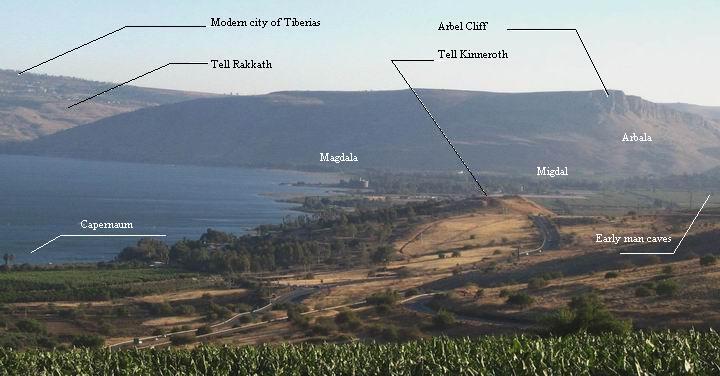
BibleWalks.com – walk with us through the sites of the Holy Land
Tell (mound) <<<—Previous info—<<< All Info >>>—Next Info—>>> Prehistoric sites
This page was last updated on Mar 2, 2023 (new overview and history)
Sponsored links:
